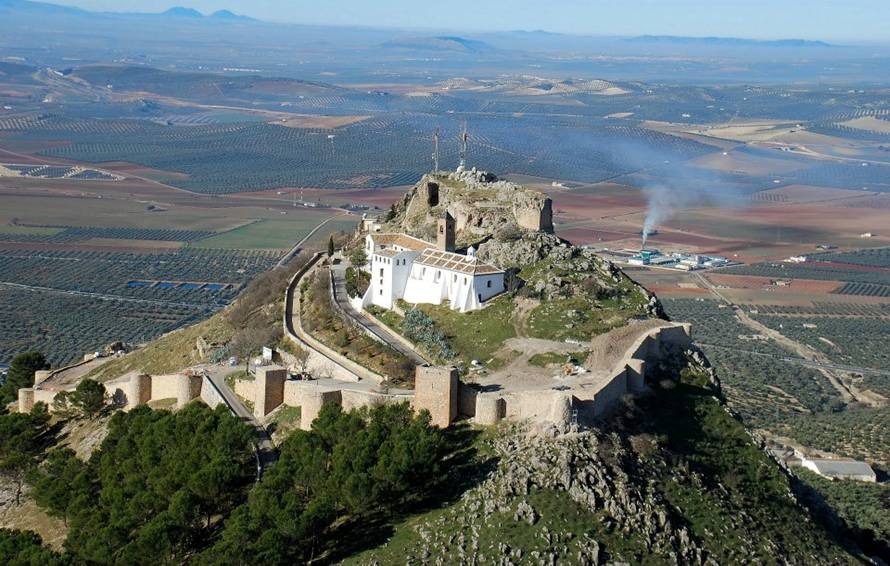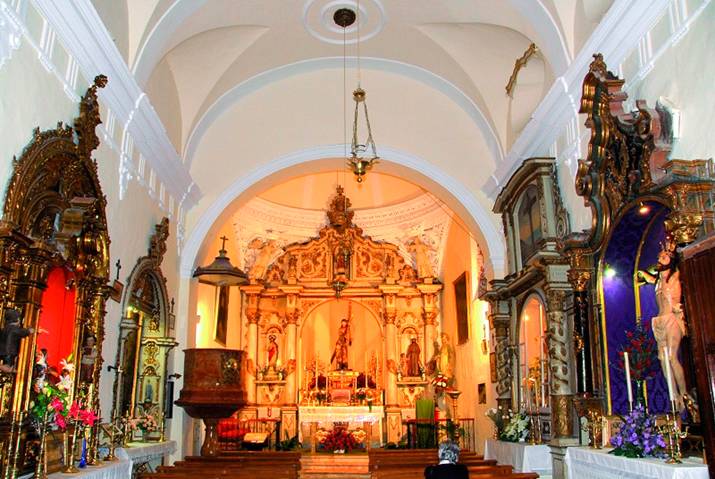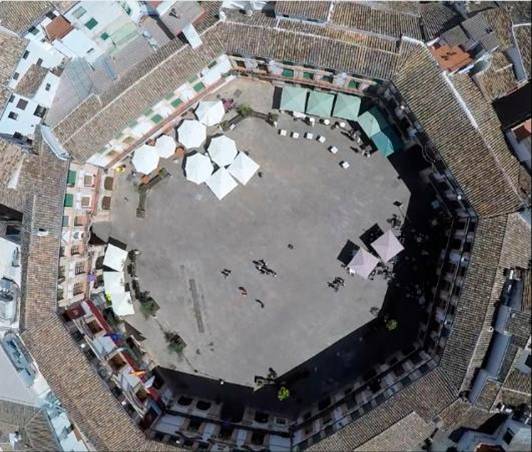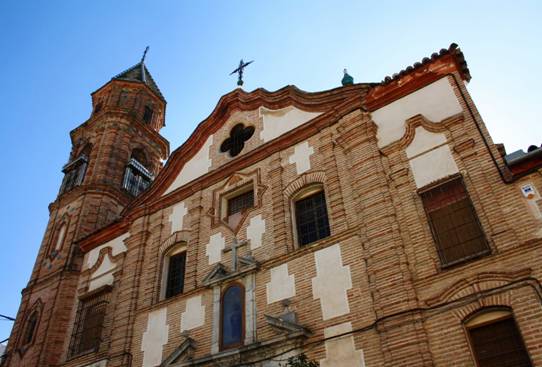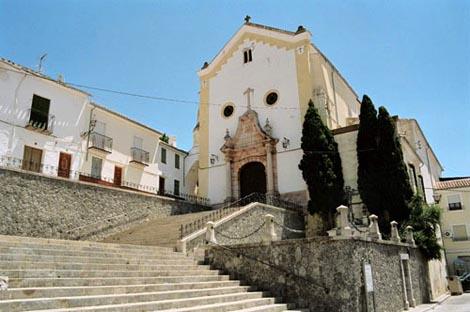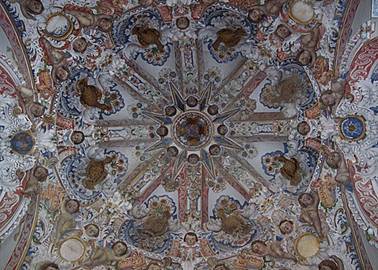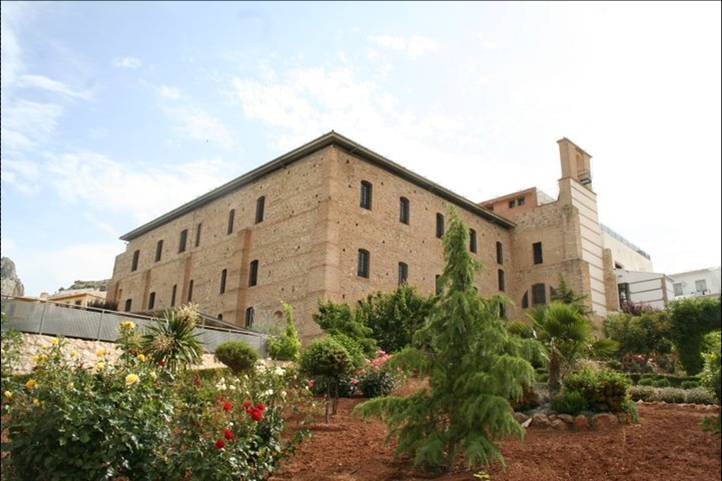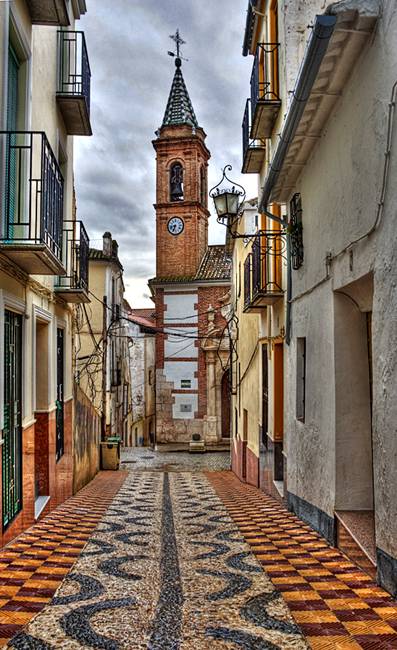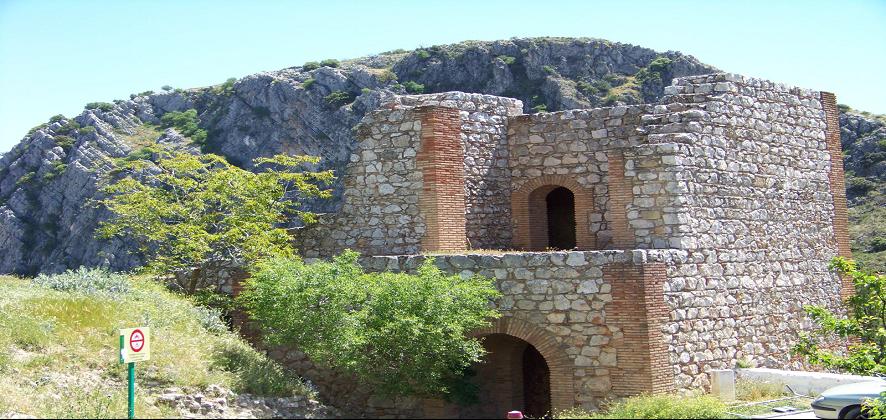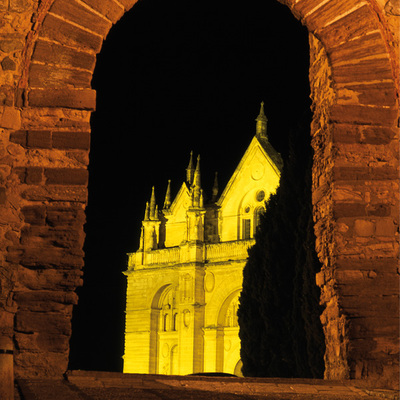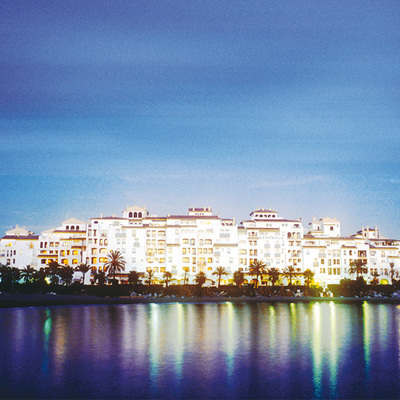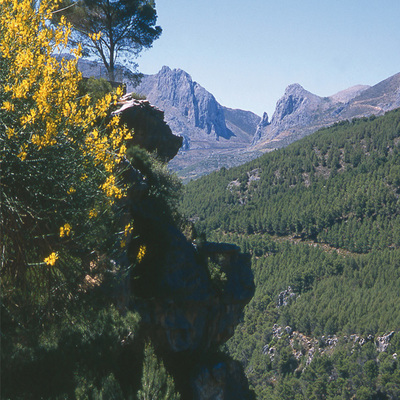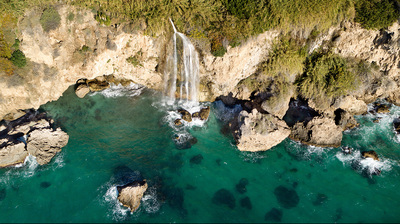Convento de Santo Domingo
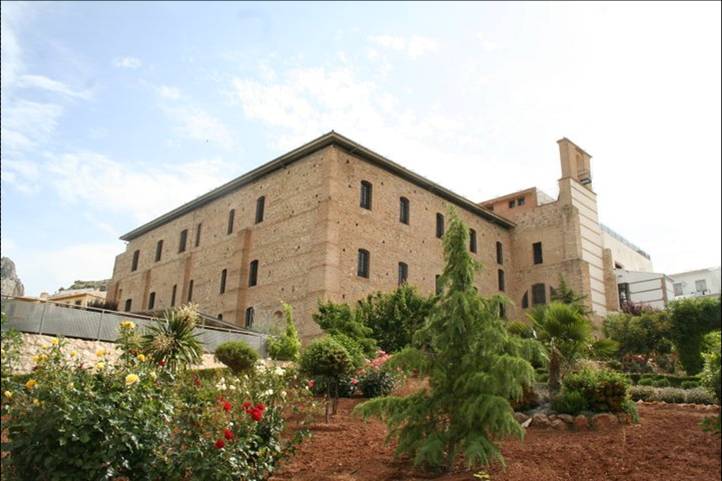
Few buildings in Archidona have undergone so many changes to their social, religious and political functions as the Convent of Santo Domingo. It has been reused a number of times and put to a variety of uses: convent, school, soap factory, again a convent and finally a hotel school.
It is the only building in Archidona with a Renaissance façade. It was one of the first buildings located in the Villa Baja, initially for religious purposes. It was founded by the Count of Ureña, and building began at the beginning of the 16th century, when a Renaissance-style church was created which gradually changed with the addition of a nave to the left, an enlarged presbytery and the addition of a bell gable.
The church started out as a single nave covered with Mudejar framework. The presbytery is square standing on terraces and also covered with framework, which opens onto the nave through a large pointed Tudor arch. Because of the lay of the land, the cloister and the convent are located at a lower level.
Between the end of the 16th and the beginning of the 17th centuries two alcoves were added to adjoining wing, both at the entrance to the church, that of the Dulce Nombre, and, near the headboard, that of the Virgen del Rosario, both decorated with remarkable plasterwork. By the time the convent was finished in the first half of the 17th century, the style was mainly Baroque and had left its original Renaissance heritage behind.
Conceived as a centre for conversion and preaching, from the very beginning it played this role so effectively that it has left an indelible mark on the building. The second role was the result of the brotherhoods created there. Two appeared in the 16th century, the Dulce Nombre and the Virgen del Rosario, both resulting from the great devotion which they inspired in the Dominicans.
In the mid-19th century, the part depending on the church was officially separated from the rest of the building since which time they taken parallel but separate paths. The church would stay open for worship until 1945. It was disentailed at the beginning of the 19th century, and although it was subsequently used as a convent, then as a monastery and later by Dominican nuns, its ruin was inescapable given how poorly it was built.
During the 20th college it was used as a school and as a soap factory. It finally collapsed which made the current refurbishment a necessity. It was converted into a Hotel and Catering School, a use that it still maintains.
Monday to Friday during business hours (catering establishment).
Free entrance.
Free to visit by appointment.
Services and infrastructure
Target audiences
Segments
Specialties
Open to visitors
You may be interested
